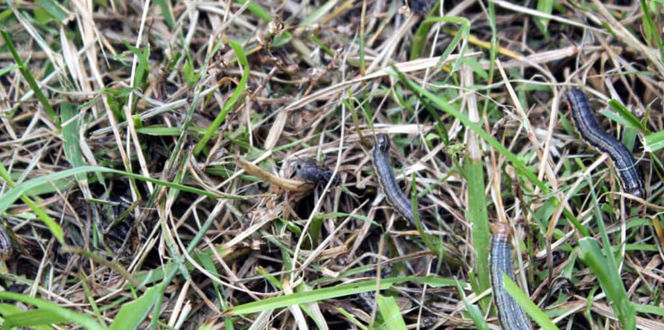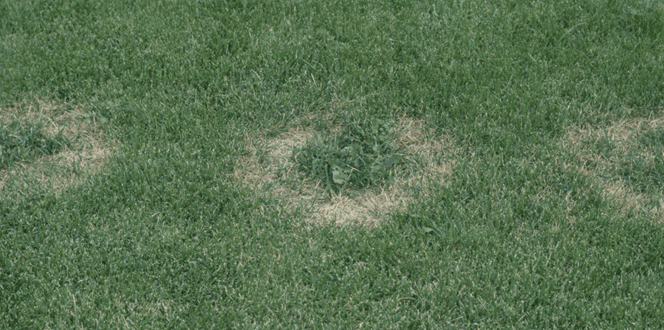Gray Leaf Spot Disease Description:
Gray Leaf Spot (GLS) is a fungal disease that affects various turfgrasses. Lesions start as olive green to brown, water-soaked dots, no larger than a pinhead. As the infection progresses, the lesions become larger and ash-colored with purple to brown margins. The turf appears scorched and thin as if suffering from drought.
Hosts:
St. Augustinegrass is the most severely affected of the turfgrasses, especially the cultivars ‘Bitter Blue’ and ‘Floratine.’ Other turfgrasses that can be infected include bermudagrass and centipedegrass in the South, as well as ryegrass and fescues.
Biology & Symptoms:
The spores of this fungus are spread primarily by wind and water. The disease develops rapidly with high temperatures and prolonged wet weather. Other factors that contribute to disease development include excessive thatch, poor drainage, and over-fertilization.
Management:
Modifying cultural practices and growing conditions may help reduce the severity of this disease.
- Avoid over-fertilizing
- Water early in the morning
- Improve drainage
- Aerify to reduce thatch
- Selectively prune trees and shrubs to increase light penetration
- Maintain the proper mowing height and frequently sharpen mower blades
Fungicide applications may be necessary if GLS infection is severe. The earlier the applications are initiated, the greater the degree of control. Fungicides are usually used as a preventive measure and may perform better if cultural practices are correctly followed. Severely affected areas may require renovation. Consult your local landscape professional to see what treatment method is right for your property





